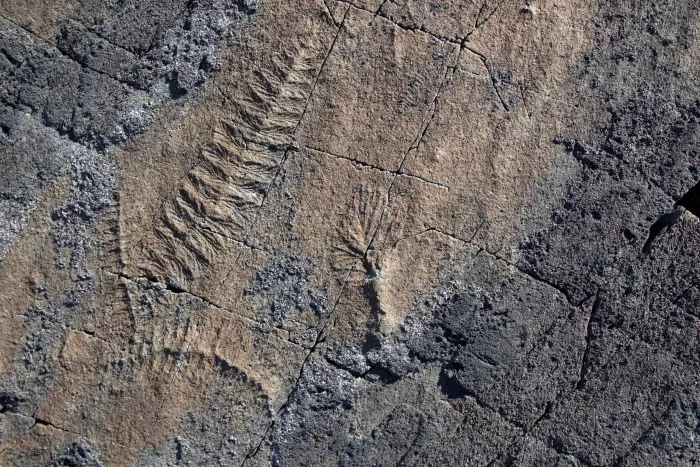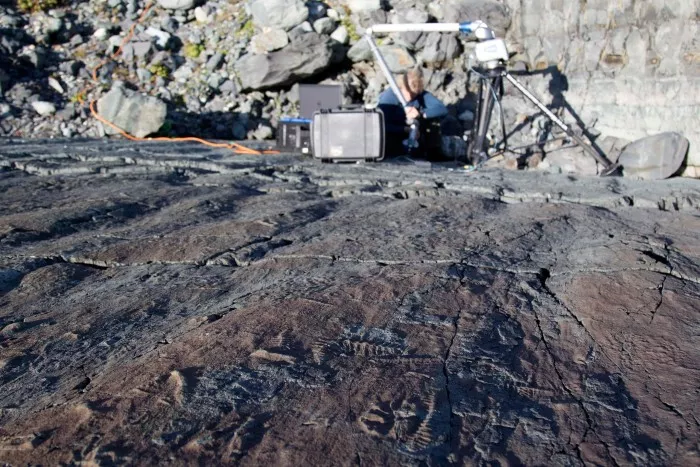According to a study published in the open journal PLoS Biology on May 17 by Rebecca Eden, emery Mitchell and their colleagues from the University of Cambridge, UK, early animals developed complex ecological communities more than 550 million years ago, creating evolutionary conditions for the Cambrian outbreak. The first animals evolved about 580million years ago, approaching the end of the Ediacaran.

A group of Ediacaran fractofusus and plumeropricum specimens from the "e" plane of mishaken point ecological reserve, Newfoundland, Canada.
However, the fossil record shows that after the initial boom, the biodiversity decreased during the rapid growth of biodiversity in the so-called "Cambrian explosion" nearly 40million years later. Scientists believe that this decline in diversity is evidence of a mass extinction event about 550million years ago - possibly caused by environmental disasters - but previous studies have not studied the structure of these ancient ecological communities.

Dr. Mitchell laser scanned the e surface, misaken point. Ediacaran organisms such as fractofusus can be seen in the foreground. Due to the subtle features of fossils, they can only be clearly seen at a specific angle of sunlight, as shown in the figure.
To assess the evidence for the Ediacaran extinction, scientists analyzed the metagroup structure of three fossil groups that spanned the last 32million years of this geological period (575million to 543million years ago). They used published paleoenvironmental data, such as ocean depth and rock characteristics, to look for meta community structures that indicate environmental specialization and inter species interactions. The analysis shows that in the later fossil assemblages, the community structure became more and more complex, indicating that at the end of the Ediacaran, species became more specialized and participated in more inter species interactions, which is a common trend during the ecological succession.
According to the authors, these results suggest that competitive exclusion rather than mass extinction is the cause of the decline in diversity in the late Ediacaran era. This analysis shows that the ecological and evolutionary dynamic features usually associated with the Cambrian explosion, such as specialization and niche contraction, were established by the first animal community in the late Ediacara.
Mitchell added: "we found that the factors behind this explosion, namely the complexity of the community and the adaptability of the niche, actually started in the Ediacaran, which was the fuse that ignited the Cambrian explosion, much earlier than previously thought.".